Basic Synth 5: Keyboards & Sequencers
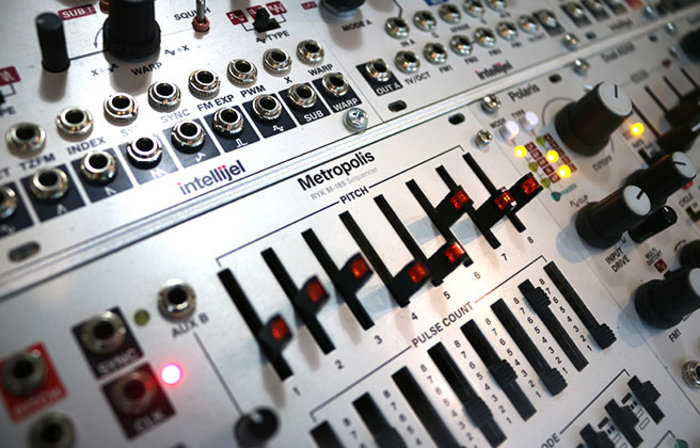
Now we have our oscillators patched to filters, which are further patched to VCAs, completing our audio path. And we have our envelopes modulating the timbre and loudness of our sound. Maybe we even have some LFOs or random voltage modulating different parameters such as the FM Index, the Resonance level, or the Attack time.
What we now need is a way to trigger the envelopes and control the pitch.
Keyboards
The most traditional way to do this (by Western music standards) is to use a CV Keyboard. When a key is pressed, two things happen.
A gate and/or trigger signal is generated. This signal is then patched to the gate/trigger input of the envelope generator. (When using gate signals with ADSR envelope generators, the control voltage rises for the amount of time defined by the attack stage, then drops for the amount of time defined by the decay stage. Voltage then sits at a level defined by the sustain stage. When the key is lifted, voltage drops back to 0V for the amount of time defined by the release stage).
A steady control voltage signal is generated. Moving up the keyboard, the steady voltage gets higher using a chromatic quantized scale. This is often patched to the 1V/Octave (pitch) input of the oscillator. This means that the voltage range of the octave note span is 1V.
That all being said, a keyboard doesn’t strictly have to trigger envelopes and control the pitch of your sound. The gate/trigger signal can be used for things like clocking random voltage generators or resetting LFOs, and the 1V/Octave output can be used for things like controlling envelope stages, LFO rates, or VCA amplitudes.
Keyboard Tracking: A very classic technique is to patch your 1V/Octave output of your keyboard to a multiple. This will split the signal between multiple outputs. Patch a copy of the 1V/Octave CV signal to the 1V/Octave input of the oscillator. Patch another copy of the 1V/Octave CV signal along with the envelope generator signal to a mixer. Mix to where the level of the 1V/Octave CV signal is higher than that of the envelope CV signal. Take the sum of the mixed CV signals and patch them to the cutoff frequency input of the filter. The filter now opens up more as higher notes are played. This is very useful when emulating brass or string instruments.
Here are some CV Keyboards that are often used with modular synthesizers:
Arturia Keystep
Novation 49SL MKIII
Make Noise 0-CTRL
Teenage Engineering Pocket Operator Modular 16
Sequencers
All of this can also be done on a sequencer. The only difference is that instead of manually playing notes, the notes are programmed on a step-by-step basis. Sequencers also have the ability to start, stop, reset, and change direction. They are often internally clocked, but can accept an external clock for synchronization with other gear.
Traditionally sequencers were between 4 and 16 steps, but more modern sequencers allow for longer sequence lengths, multiple patterns, and song modes.
There are three main types of sequencers:
CV Sequencers: Sequence control voltage only like the 2hp Seq or Make Noise Pressure Points + Brains combo.
Trigger Sequencers: Sequence trigger, gate, and clock signals only like the Tiptop Audio Circadian Rhythms or the vpme.de Euclidean Circles.
CV/Gate Sequencers: Sequence control voltage, trigger, gate, and clock signals like the Winter Modular Eloquencer, the Squarp Hermod, the Make Noise Rene’, the Intellijel Metropolis or the Korg SQ1.
Here are some features and topics to keep in mind when choosing a sequencer:
Type: CV Sequencer, Trigger Sequencer, or both?
Sequence Length: Can the step count of the sequence amount be changed? Is it 4 step, 8, step, etc?
Recall: Can patterns be saved or chained?
Clock: Are both internal and external clock input present?
Start / Stop Control: Sometimes called "Run". Can it be stopped without unpatching a cablel?
Reset: Are you able to reset the sequence to step 1?
Direction/Order: Some sequencers can run in forward, backward, pendulum, random order.
Quantizer: Can the notes/voltages be quantized to musical scales, or even user-defined scales?
Portamento: Can slew be added to the voltages, causing the notes to glide from one to another?
Pulse Width: Can you vary the width of the gate signals?
CV Inputs: Can the sequence be controlled externally?
Gate Outputs: Is there a summed gate output or gate outputs for every step?
Channels: Is it a 1-track sequencer like the Intellijel Metropolis or an 8-track sequencer like the Winter Modular Eloquencer?
Randomness: Is there any amount of randomness that can be applied to the sequence?
Interconnectivity: Is there MIDI functionality?
Capacitive: Can it be used as a touch surface controller?
Sequencers can be anywhere from super simple to incredibly complex. To me, the sequencer is the ultimate compositional tool when making music for the modular synthesizer. It defines the movement that sounds are allowed to have in a programmed and musical manner.
Thanks again for checking out our blog and learning modular synthesis with us!
Feel free to comment with any questions, ideas, or opinions!
Next article in the Basic Synth series: Basic Synth 6: Utilities
 All Modular Brands
All Modular Brands
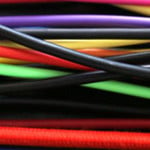 All Patch Cables
All Patch Cables
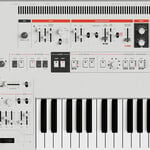 Synthesizers
Synthesizers
 Controllers
Controllers
 Drum Machines
Drum Machines
 Sequencers
Sequencers
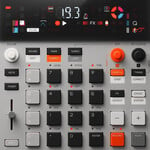 Samplers
Samplers
 Soundmakers
Soundmakers
 DIY
DIY
 Effects
Effects
 Cables
Cables
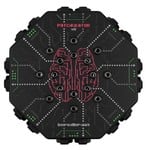 Audio/MIDI
Audio/MIDI
 Video
Video
 Music/Media/Gifts
Music/Media/Gifts
 Accessories
Accessories
 Used
Used
 Vintage
Vintage
 DEALS
DEALS
 Modular
Modular
 Synthesizers
Synthesizers
 Controllers
Controllers
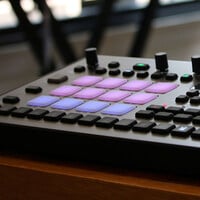 Drum Machines
Drum Machines
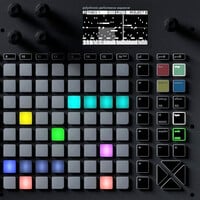 Sequencers
Sequencers
 Samplers
Samplers
 Soundmakers
Soundmakers
 DIY
DIY
 Effects
Effects
 Cables
Cables
 Audio/MIDI
Audio/MIDI
 Video
Video
 Music/Media/Gifts
Music/Media/Gifts
 Accessories
Accessories
 Used
Used
 Vintage
Vintage
 DEALS
DEALS


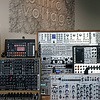


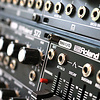
Comments
I basically want to know how it modify's the sound......I'm just a beginner and don't know any of the technical side of these things....if you could give me a basic idea of how it changes the sound, I'd really appreciate it. Thanks, Ant